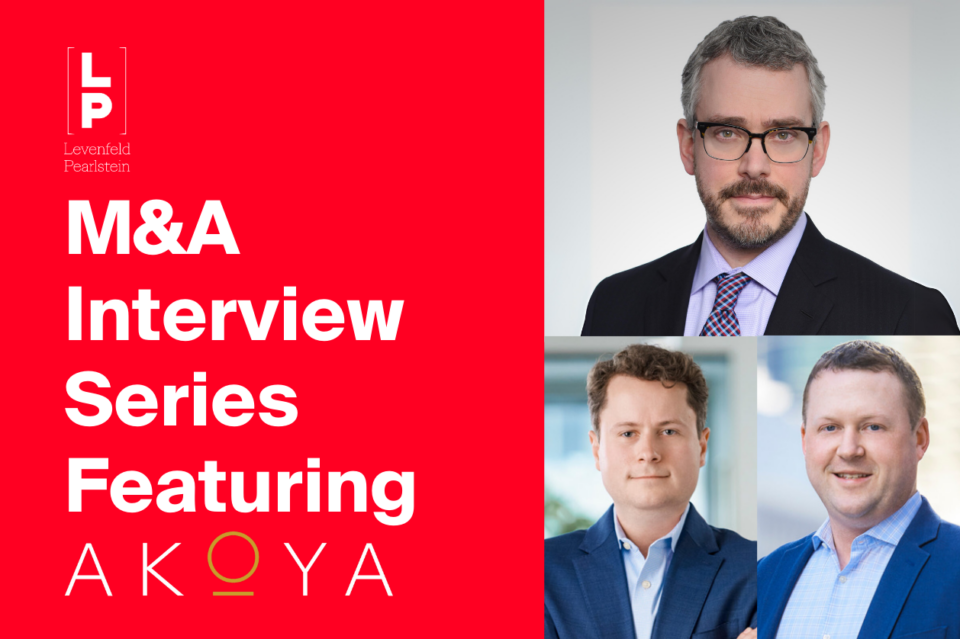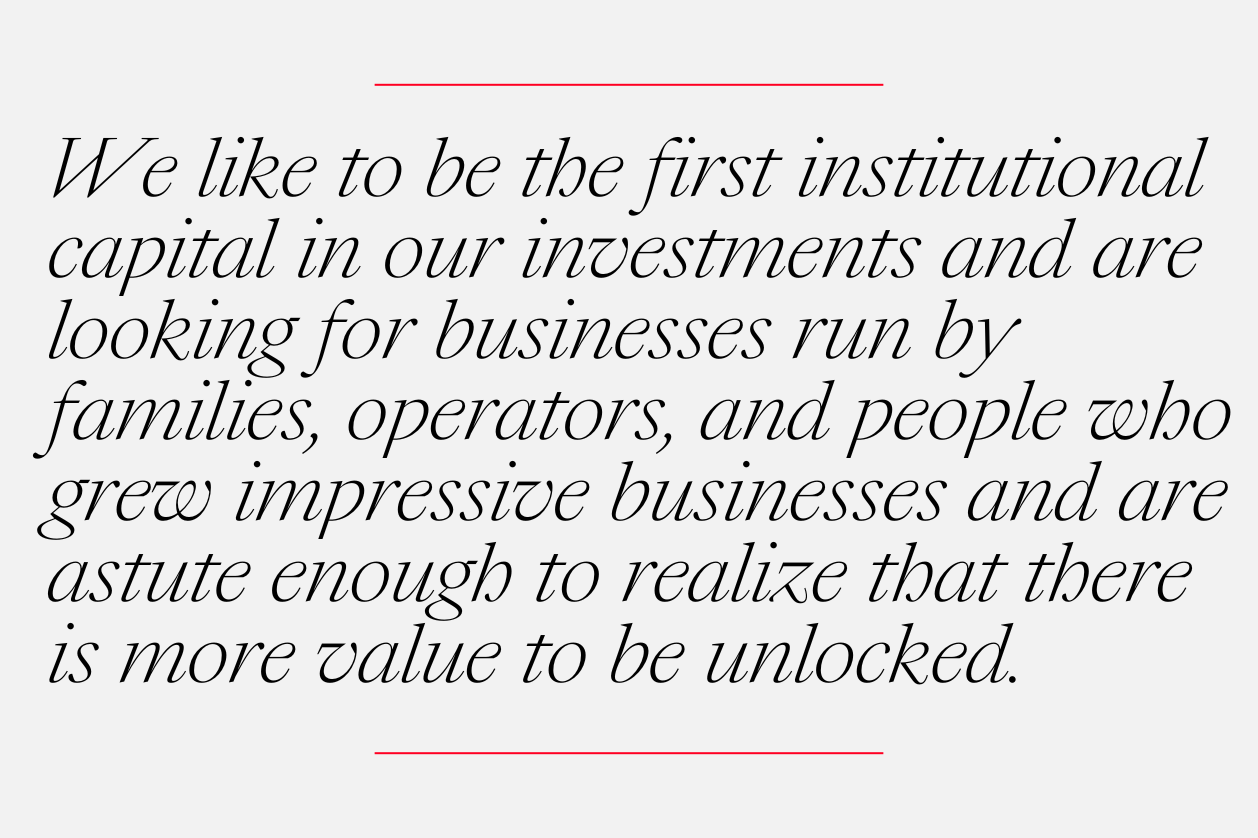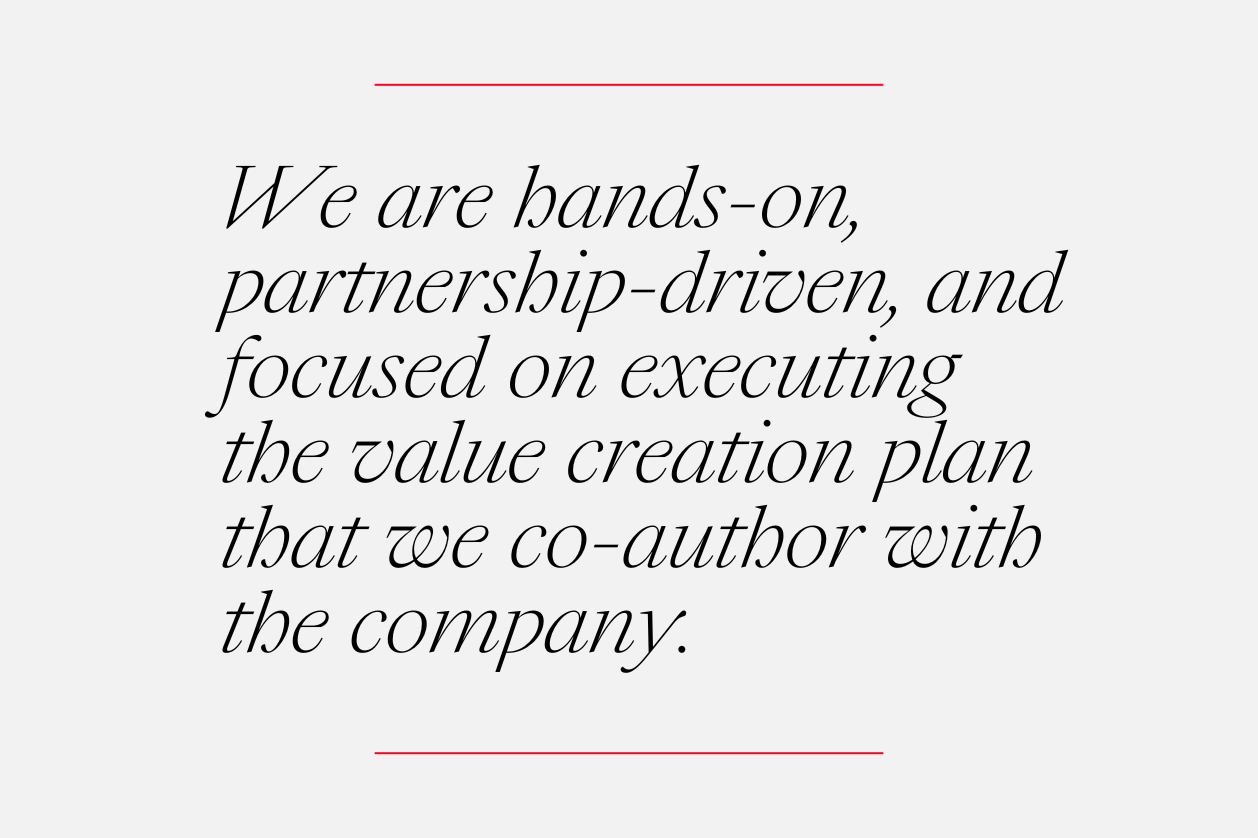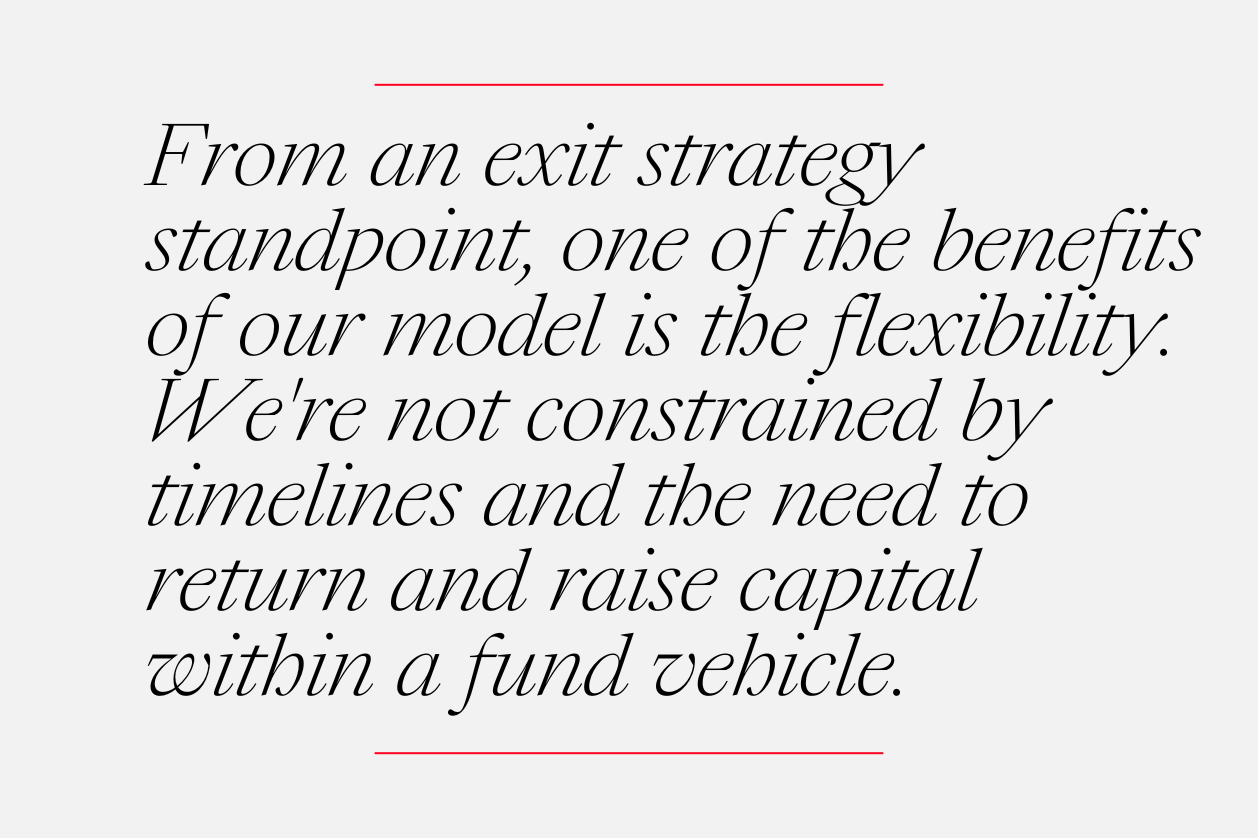Part 1: Private Equity Profiles and Perspectives: An In-Depth Conversation with Pat Riley and Lukasz Wrona of Akoya Capital

Part 1: The Importance of Differentiation and the Role of Human Capital in Private Equity Investments
To help businesses, investors, and deal professionals better understand the evolving private equity landscape in the lower middle market, Rob Connolly – a partner in and leader of LP’s Corporate Practice Group – shares a series of conversations with private equity firms and professionals.
Below is his conversation with Pat Riley and Lukasz Wrona, Managing Directors at Akoya Capital, a well-established independent sponsor that invests in lower mid-market businesses. In this first of a two-part Q&A conversation, Pat and Lukasz explain Akoya’s unique approach to investing in middle market companies, especially when it comes to differentiation and the role of human capital. In part two, they discuss the current market outlook, how businesses looking to sell can differentiate themselves, and what they see on the horizon for middle market M&A transactions and PE investments.
The responses below have been edited slightly for brevity and clarity.
Can you explain a bit about Akoya’s history and place in the middle market private equity space?
Lukasz Wrona: Akoya has been around for almost 20 years, since 2005. Our current model is sector-focused and leader-led. We have a good track record of executing transactions following that strategy. Over the past 15 years, we’ve completed over 21 platform investments and over two dozen add-ons to those.
What differentiates Akoya from other financial sponsors?
Lukasz Wrona: We try to differentiate ourselves as investors by being sector focused. We invest only in specific lanes, which we determine by partnering with operating partners, who we call “Sector Leaders.” Our Sector Leaders bring deep domain and industry expertise to our investment decision-making process. That is key because these individuals spent their entire professional lives in their respective segments. They have reached a point in their career where they want to share their knowledge and be more in a coaching position rather than the player.
Once we partner with a Sector Leader, we go through an extensive process of putting together an investment thesis that describes in detail what type of investments we are pursuing, the characteristics, the addressable market, and the trends we are looking for in terms of that investing rationale. Once that is complete, we try to identify those companies. Our approach is dual; we do it on a proprietary basis with our own internal efforts and by working with close buy-side partners. We also benefit from having a broad network of different intermediaries and investment banks, brokers, and others who have a connection to a potential deal. Being sector-focused differentiates us from a generalist investor.
Where we additionally bring further differentiation is through human capital. That is the glue that binds the other elements together. As an organization, going back to our founder Max DeZara and his extensive experience with executive recruiting, we have maintained a people-first business philosophy and bring a tremendous amount of human capital expertise to our team. By design, our firm has always been very focused on that element, as seen through our relationship with our Sector Leaders and how we look to strengthen our portfolio companies by augmenting the management team with accomplished business leaders and teams.

The situations we are looking for in terms of investment are always more partnership oriented. We like to be the first institutional capital in our investments and are looking for businesses run by families, operators, and people who grew impressive businesses and are astute enough to realize that there is more value to be unlocked. They understand it is smart to take some chips off the table while bringing the resources and partner to help continue to unlock additional value. Those are exactly the situations we are looking for and our human capital strengths allow us to do that. It becomes very clear to the seller that we are a different type of partner and we are not just looking for a transaction; we are really looking for a partnership and doing something together that is special.
If you take a step back and put it all together, what we bring to the deal is not only the growth capital that a successful business needs to continue to invest in its operations – Capex, working capital, and so on – but we also bring operational and strategic support through our Sector Leaders and operations professionals. The human capital expertise binds it all together.
What is your typical investment criteria and target deal size?
Pat Riley: We are focused on lower middle market businesses. We define that as revenue from $25-200 million, minimum EBITDA of about $4 million, North American-based, and fundamentally healthy companies. We don’t look at distressed or turnaround situations. One of the more important lenses that we use to evaluate deals is looking at where they are under-resourced and why they are not achieving their full potential, and we often look at that through the lens of human capital. That has been our DNA throughout the life of the firm. We consider where we can augment and top-grade the leadership team. And we are often doing that in conjunction or hand in hand with the existing team. It is not a situation where we bring in a new CEO or CFO and the existing team goes away. We really try to augment and get the right people in the right seats with financial resources and growth capital. We love situations where businesses are at an inflection point, and part of the reason they are seeking a partner like Akoya is for a significant acquisition or capital investment in the facility to expand their footprint.
On the strategic front, this is where our Sector Leaders can bring the most value, really helping the business think about what it can become and what is going to be the value creation road map to take the business from $50-100 million to over $200 million and take EBITDA from $5 million to $10-15 million. The skill set to start a company and take it to a level where it’s time to take on an investor like Akoya is incredible. But often, taking the business from that level to where we would need it to be requires a different skill set and approach. That is where we can slot in and add value.
In the 45 deals or so we have done, I think we have been the first outside capital or institutional capital coming into the business in all but maybe one or two of them. We really like to see ownership that is concerned about legacy and preserving the culture of the business, who are looking for a partner and ascribe value to our Sector Leaders and the strategic approach we bring to the table. We also like to see significant seller rollovers. Across the portfolio, we probably average 20-25% founders’ post-close ownership.
What are your criteria for deciding to pursue or pass on a potential deal?
As far as some of the criteria we look for when deciding to pursue or pass, we talked about companies being under-resourced from an industry perspective. Obviously, we like to see tailwinds and growth opportunities organically. We also like add-ons. We are not the type of group to do a roll-up where we put 30 different companies together. We tend to focus on one to two highly strategic, complementary add-ons per platform. So, we like industries where there is still opportunity to consolidate. We often do comprehensive work prior to LOI to assess that and build out the road map to how we are going to execute the add-on strategy. I would also note that our sector and operating talent allow us to look past some business attributes that other sponsors might shy away from, such as customer concentration, challenges in the industry, or human capital factors. We have seen it all and have the resources to bring in new people if needed, so we can look at some messier situations on the human capital front.
Can you describe how you use “Value Creation Plans” with your portfolio companies?

Before we close on a deal, we work closely with management to develop what we call our “value creation plan,” which is the blueprint for what we will do as partners with the key strategic objectives across multiple aspects of the business. We hold ourselves to that plan post-closing, so we will check in on that during board meetings and periodically throughout the year to make sure the strategy is sound and we are making progress on it. If not, we will course-correct and take a hands-on approach. The deal team are not operational people; we are focused on acquisitions, strategy, and being a sounding board for the management team. To the extent we encounter an issue or challenge for which we don’t have the right expertise, we have a deep network of third-party consultants and other advisors who will help us sort through those specific issues. We are hands-on, partnership-driven, and focused on executing the value creation plan that we co-author with the company.
Lukasz Wrona: We focus more on what we can do with the business than what the company has done historically. We also don’t focus much on financial engineering to create value, but seeing what we can do with the company going forward from the operations standpoint. Fundamentally, how can we change this business? Often, we bring a decent amount of change to the business, which is a positive. Our assessment of what the company can become ties clearly to the value creation plan, which isn’t something that we impose on the company; instead, we develop it in close collaboration with the company’s management teams and ownership pre-close to get the necessary buy-in and understanding, so there are no surprises and we are connecting to our partnership-oriented approach. This approach connects with sellers because they see us as another peer, not strictly a financial partner with limitations.
What is Akoya’s approach to capital partners?
Pat Riley: We work with a variety of different groups to finance our transactions. One of the benefits of the independent sponsor model is flexibility in terms of type of capital, deal structures, hold periods, and the like. The biggest criteria for us are the ways that the partner will add value. We typically control the boards of our companies, and with our hands-on approach and Sector Leaders, we are driving diligence and post-close governance. But we like situations – whether it’s a family office, institution, or another group with industry experience – where they can be value-added partners beyond just providing capital.
The cultural aspect is essential. Obviously, the numbers and structure have to work, but finding people with similar attitudes and approaches to governance, interacting with the management team, and having a philosophy regarding partnership with our portfolio companies is super important.

From an exit strategy standpoint, one of the benefits of our model is the flexibility. We’re not constrained by timelines and the need to return and raise capital within a fund vehicle. Our approach in how we position things with management is that we will exit when the time is right. We won’t be forced to do that by external factors outside the business. Obviously, we want to see growth and execution of the value creation plan. Generally, we will rely on an investment banker to run a process. Historically, most of our exits have gone to strategic buyers or private equity-backed strategics.
Going back to our value creation plan process, we like to take businesses that are not quite platform-ready and, with the combination of our strategic expertise, human capital, and doing acquisitions, we get them to that next level and make them attractive for a larger private equity buyer or a strategic. Our typical hold period averages around five years.
Can you share any success stories or lessons learned with this model?
Lukasz Wrona: A good example of a success story that ties into our approach is the acquisition of a metals contract manufacturing company in Vermont. In 2017, when we invested, the company had about $45 million of revenue, five facilities, and 250 employees. We owned the company for four years, and in that time, we significantly invested in the company’s human capital. We professionalized the team and brought in a new CFO. We built a sales and marketing organization, brought in the HR director, completed three add-on acquisitions, and invested almost $25 million in Capex – which was a lot, but that allowed us to unlock the growth. On exit, we grew that company within four years to $150 million of revenue and almost 700 employees across nine facilities.
For this investment, we partnered with Mark Breckheimer, who served as the Sector Leader and the executive chair of the board of the target company. We changed the name of the company and worked closely with Jim Maroni, our CEO, and the rest of the team to execute the value creation plan. All the components we discussed previously were activated in this transaction and we enjoyed a great success on it, realizing over 44% IRR on that investment. Going back to the value creation plans we put together, this is a great example of a success story.
For more information on Pat Riley and Lukasz Wrona, view their bios (Pat and Lukasz). For more information on Akoya Capital, visit their website. For more information on Akoya’s investment criteria and partnering with Akoya see here: Investment Criteria – Akoya Capital.
Interested in participating in a future interview series? Please contact Robert Connolly at rconnolly@lplegal.com.
To read other articles in this series, please see here: Insights | LP (lplegal.com)